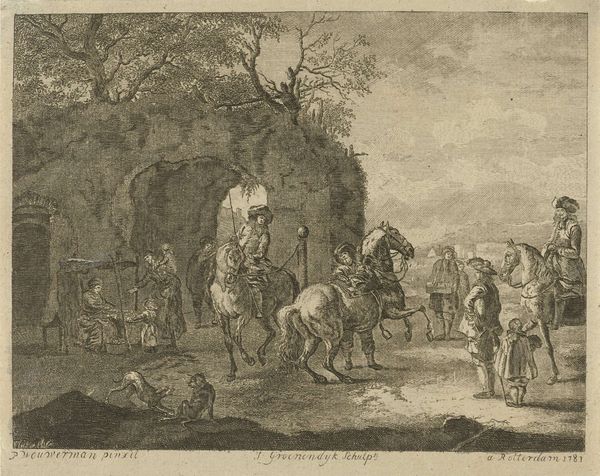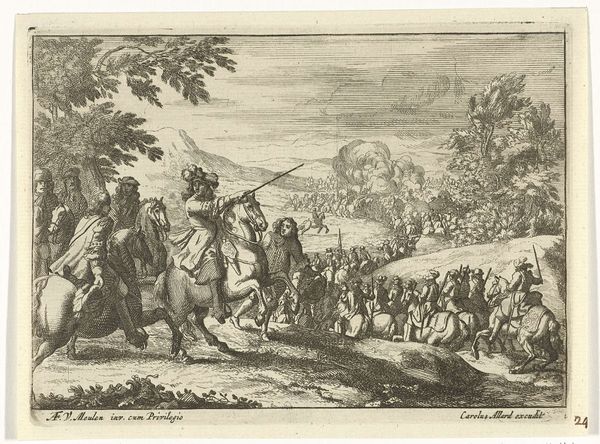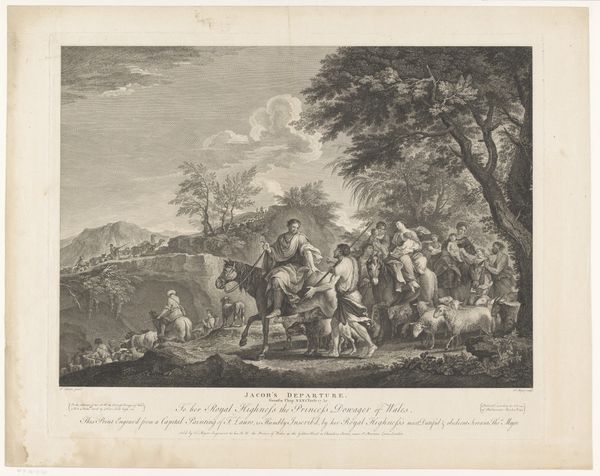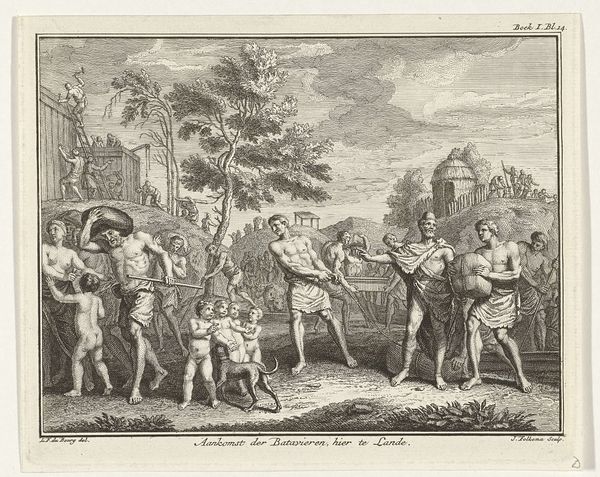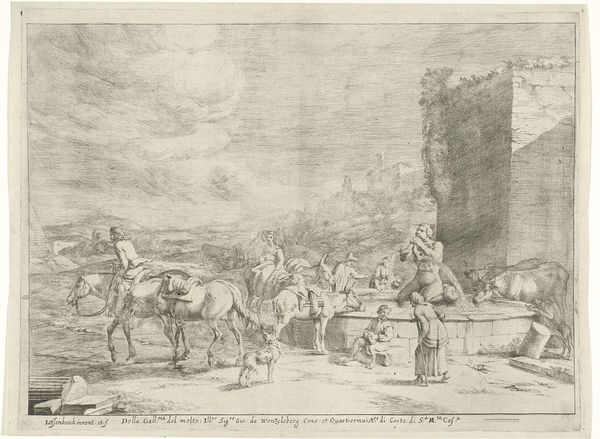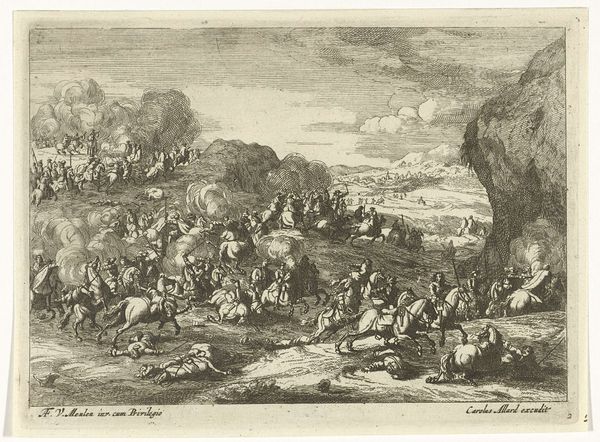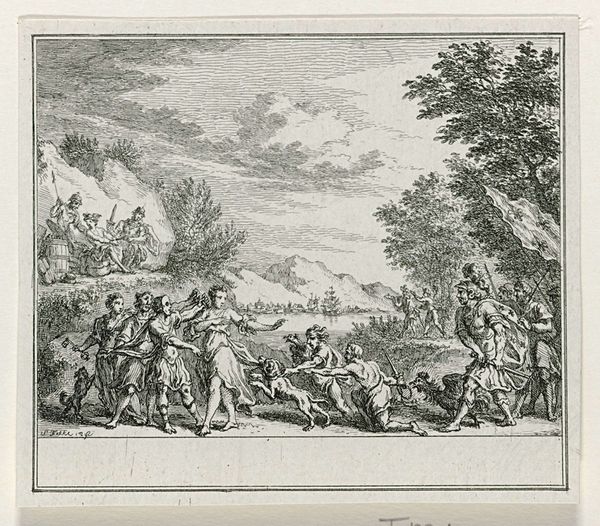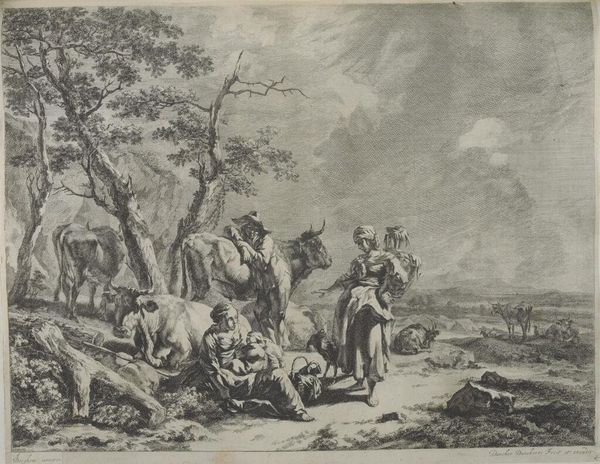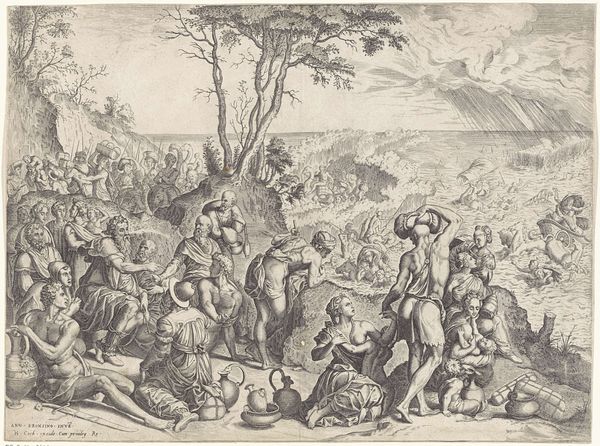
print, etching
#
dutch-golden-age
# print
#
etching
#
landscape
#
figuration
#
genre-painting
Dimensions: height 370 mm, width 411 mm
Copyright: Rijks Museum: Open Domain
Curator: Look at this striking print. It's titled "Ruiters krijgen paardrijles bij rijschool," or "Riders Receiving Riding Lessons at Riding School." Attributed to Dancker Danckerts, it dates to sometime between 1633 and 1666. It's an etching, currently held here at the Rijksmuseum. Editor: My immediate thought is: textures! Look at the way the landscape is evoked; so gritty and layered, and achieved only through lines. There's almost a brutal feel in the etched line work, making it not exactly a pastoral scene. Curator: Precisely! And consider how the setting itself, despite the everyday subject matter, invokes a grander narrative. The archway suggests a gateway to another realm. It's no simple horse training ground; the lessons imparted are those of status and power, the rituals of aristocracy in the Dutch Golden Age. The horses rearing up on their hind legs mimic and reinforce this tension. Editor: Yes, but I am fascinated by how many steps were required to make the plates themselves, so it could become reproducible on paper and shareable beyond the owner. Did they hire the artist or were they in-house workers, using dangerous chemicals? Also, the quality of the paper has lasted centuries! That in itself is astounding. Curator: Good point! It is interesting that so much effort went into reproducing it, so the idea had a much wider impact than the physical picture. I see those rearing horses not only representing the nobility but perhaps alluding to concepts of ambition and social mobility prevalent at the time. Horses themselves had strong, ingrained cultural symbolism—they weren't just modes of transportation. Editor: That kind of dissemination surely helped establish Danckerts’s reputation, because he must have used quite a few chemicals and tools, working directly with etchers who were mastering and experimenting with techniques that, until very recently, defined popular culture, so they must have sought credit. What did paper consumption look like in the Netherlands at the time? This landscape is anything but simple, even though the subject looks basic at first glance. Curator: Absolutely, the materiality and accessibility played key roles in how messages about status, aspiration, and the wider social order were reinforced. It’s more than just horse training, right? Editor: Far more! Thinking of the economics, techniques and production...well, that's a whole other horse!
Comments
No comments
Be the first to comment and join the conversation on the ultimate creative platform.
